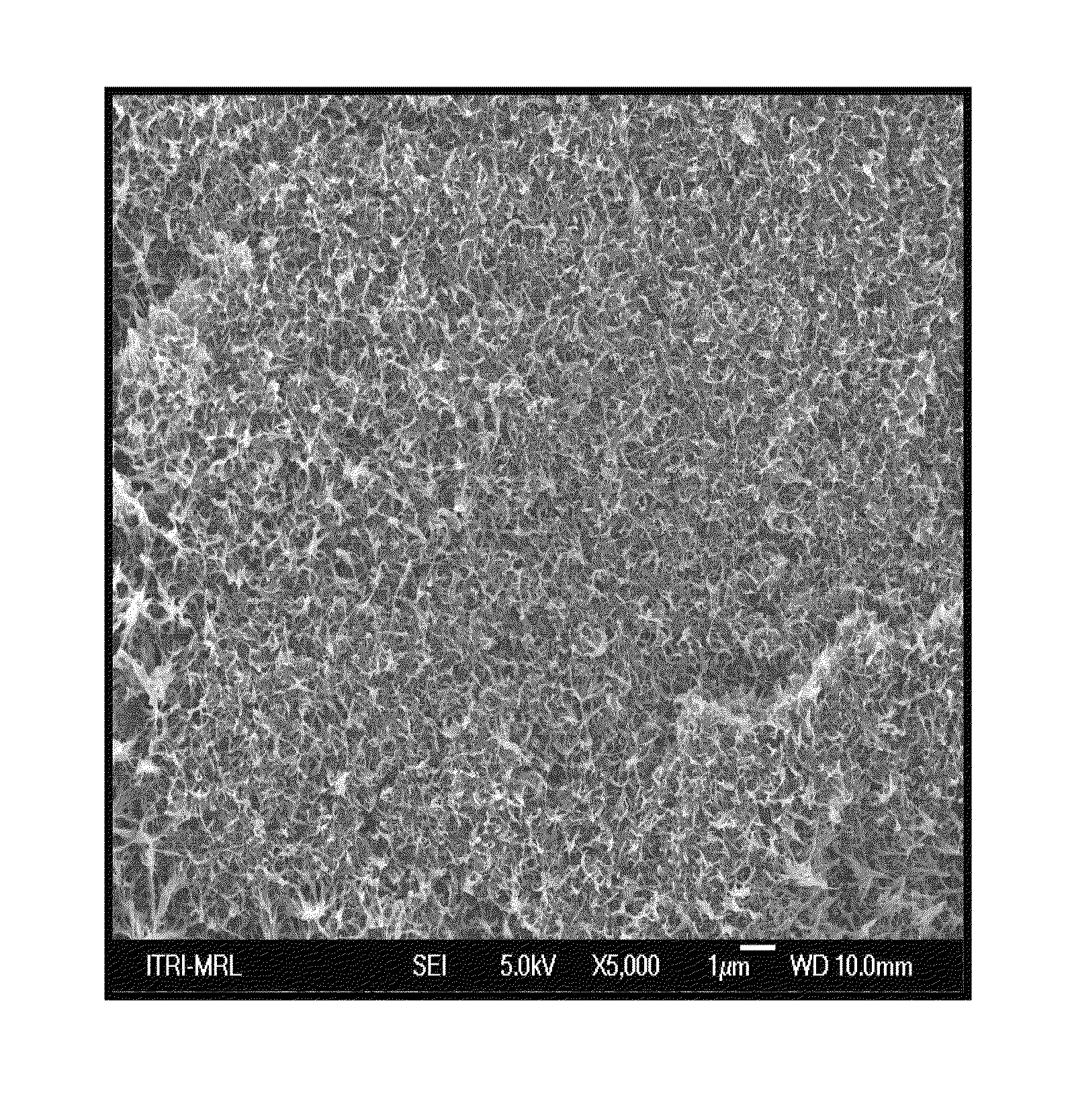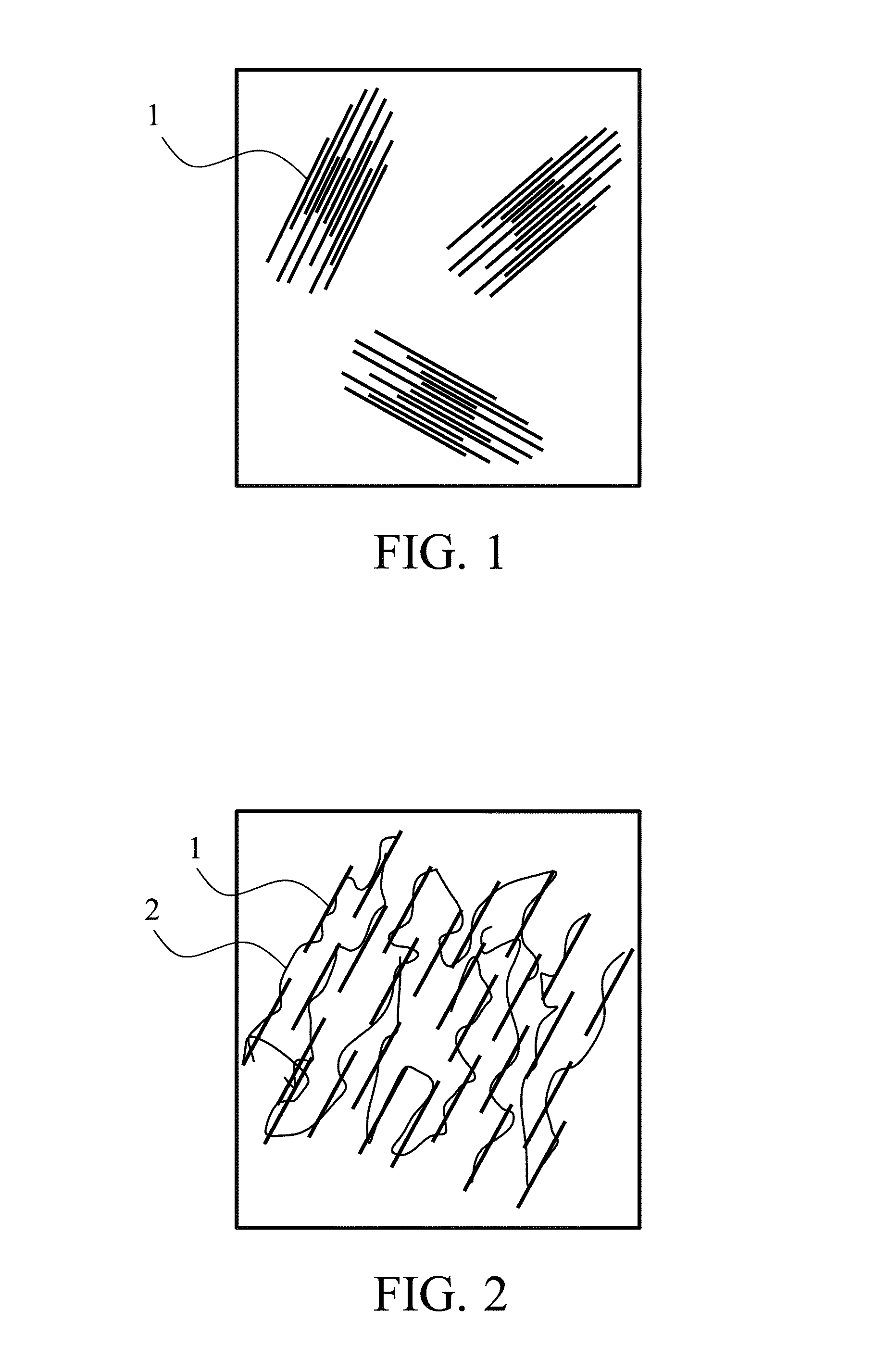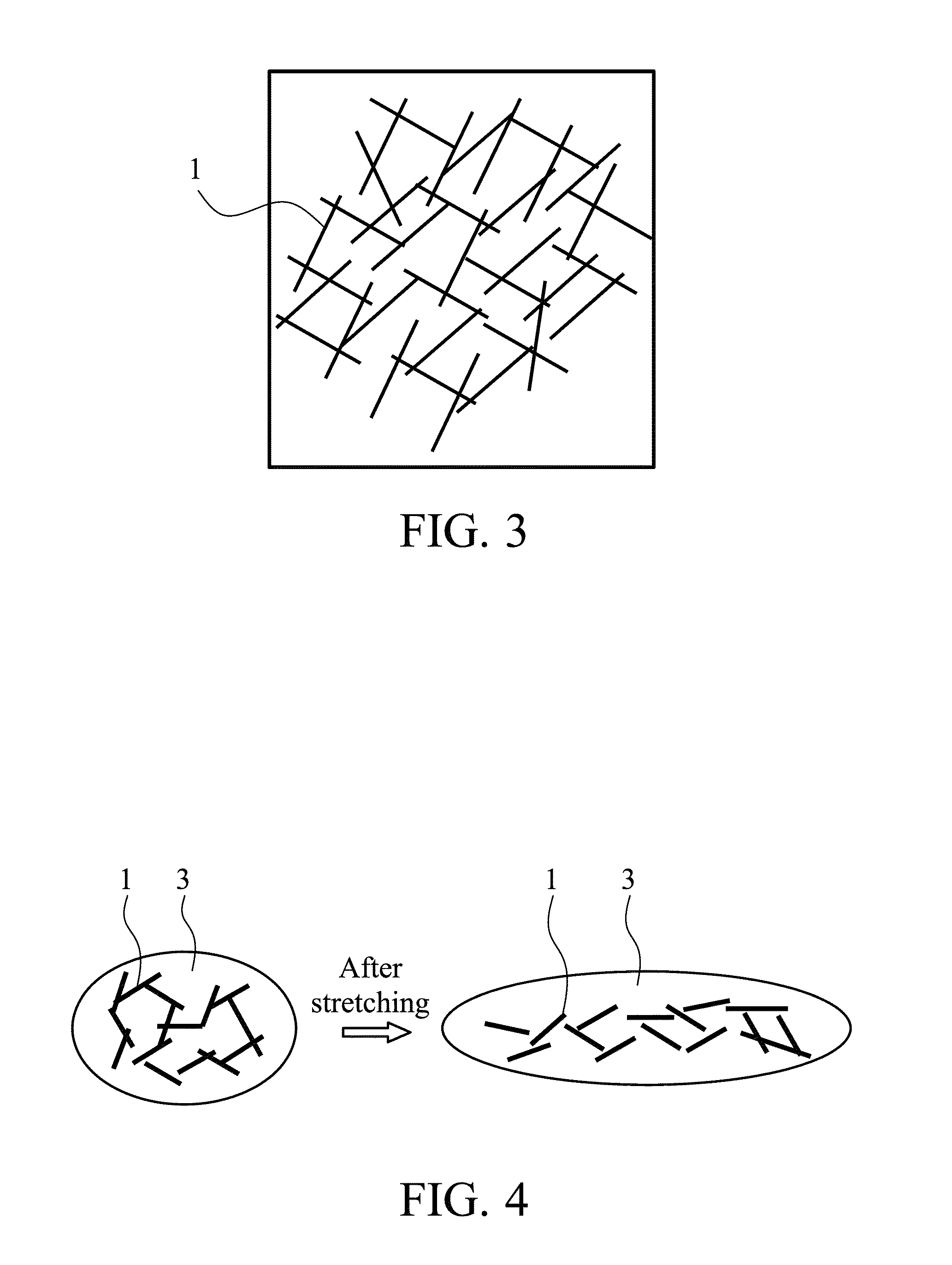Carbon nanotube powders and methods for manufacturing the same and composite materials
a carbon nanotube and powder technology, applied in the field of composite materials, can solve the problems of affecting the yield of production lines, attracting dust or dirt, and affecting the performance of electronic equipment,
- Summary
- Abstract
- Description
- Claims
- Application Information
AI Technical Summary
Benefits of technology
Problems solved by technology
Method used
Image
Examples
example 1-1
[0045]10 mg of a carbon having a high length / diameter ratio (SN5906837 commercially available from Nanomaterial Store), 10 mg of a dispersant, and 15 mL of a solvent were charged in a 20 mL sample bottle, and then supersonic oscillated for over one hour. The dispersant was a random copolymer polymerized of a solvation segment (A) as shown in Formula 1 and a carbon affinity segment (B) as shown in Formula 2, wherein R1 was a methyl group, R2 was a butyl group, R3 was a methyl group, and R4 was ethanol amine group. Each gram of the dispersant had an amine value (mg KOH) of 65. The carbon nanotube was averagely dispersed in the solvent such as DMSO, THF, toluene, or n-hexane after the supersonic oscillation was stopped.
example 1-2
[0046]10 mg of a carbon having a high length / diameter ratio (SN5906837 commercially available from Nanomaterial Store), 10 mg of a dispersant, and 15 mL of a solvent were charged in a 20 mL sample bottle, and then supersonic oscillated for over one hour. The dispersant was a random copolymer polymerized of a solvation segment (A) as shown in Formula 1 and a carbon affinity segment (B) as shown in Formula 2, wherein R1 was a methyl group, R2 was a butyl group, R3 was a methyl group, and R4 was N-isopropylpiperazine group. Each gram of the dispersant had an amine value (mg KOH) of 76. The carbon nanotube was averagely dispersed in the solvent such as DMSO after the supersonic oscillation was stopped.
example 1-3
[0047]10 mg of a carbon having a high length / diameter ratio (SN5906837 commercially available from Nanomaterial Store), 10 mg of a dispersant, and 15 mL of a solvent were charged in a 20 mL sample bottle, and then supersonic oscillated for over one hour. The dispersant was a random copolymer polymerized of a solvation segment (A) as shown in Formula 1 and a carbon affinity segment (B) as shown in Formula 2, wherein R1 was a methyl group, R2 was a butyl group, R3 was a methyl group, and R4 was 4-morpholinyl-2-ethylpiperazine group. Each gram of the dispersant had an amine value (mg KOH) of 36. The carbon nanotube was averagely dispersed in the solvent such as THF after the supersonic oscillation was stopped.
PUM
| Property | Measurement | Unit |
|---|---|---|
| length/diameter | aaaaa | aaaaa |
| length/diameter | aaaaa | aaaaa |
| distance | aaaaa | aaaaa |
Abstract
Description
Claims
Application Information
 Login to View More
Login to View More - R&D
- Intellectual Property
- Life Sciences
- Materials
- Tech Scout
- Unparalleled Data Quality
- Higher Quality Content
- 60% Fewer Hallucinations
Browse by: Latest US Patents, China's latest patents, Technical Efficacy Thesaurus, Application Domain, Technology Topic, Popular Technical Reports.
© 2025 PatSnap. All rights reserved.Legal|Privacy policy|Modern Slavery Act Transparency Statement|Sitemap|About US| Contact US: help@patsnap.com



